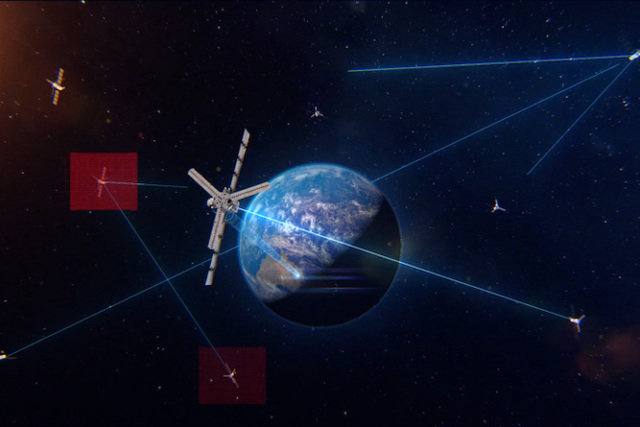The US Space Force plans to receive digital models of early warning satellites for rocket launches for medium Earth orbit from Raytheon and Millennium Space Systems by the end of 2022. According to Breaking Defense, these satellites will allow you to observe the launches of cruise, ballistic and hypersonic missiles. If the result suits the military, they will order up to three satellites from each of the companies for testing in orbit.
The basis of the American early warning system for missile launches today is the SBIRS infrared and optical detection satellites. They are located in a geostationary orbit and are able to record activity from the launch of a ballistic missile to artillery firing. SBIRS are not adapted to detect and track highly maneuverable hypersonic vehicles.
Therefore, the US military launched the HBTSS project to create a grouping of several dozen satellites for low-Earth orbit. Their prototype, capable of detecting hypersonic weapons and gliders, should be developed by L3Harris Technologies by 2023. But satellites in Earth orbit are moving too fast, and to observe a large area, they will need a lot, so the attention of the US space forces was attracted by an unconventional medium Earth orbit.
The military hopes that the medium Earth orbit will allow them to observe the launches of cruise, ballistic and hypersonic missiles, and for a longer time than is possible with a low Earth orbit. In May, the Space Force signed contracts for the development of digital models of satellites for medium Earth orbit with Raytheon and Millennium Space Systems .
The US space Forces plan to receive digital models of early warning satellites for medium Earth orbit by November 2022. On these models, they will test the new generation of OPIR permanent infrared radiation sensors. The sensors should detect infrared plumes from rocket launches and transmit their coordinates to other satellites and ground stations. If the results are successful, the military can order up to three satellites from each of the companies for testing in orbit.
The same sensors will be installed on two Northrop Grumman satellites, which we wrote about earlier. The US Space Force signed a design and development contract with it last year.
Vasilisa Chernyavtseva

